-
Posts
321 -
Joined
-
Last visited
Content Type
Profiles
Forums
Articles
Posts posted by rawshooter
-
-
It should have the same image quality since both cameras have the same sensor, and Panasonic's codecs are decent enough.
The only difference will become visible if you really have to push the material - for example, into a different white balance (when having shot in mixed available light, such as in a club or at a concert).
In the end, it comes down to the difference between 10bit log recording (Panasonic) and 12bit log recording (Blackmagic's BRAW, which isn't really RAW in a technical sense).
-
-
In practice, you can switch forth and back between full frame 4K raw and APS-C 4K raw video recording without great image quality penalty. (The difference in noise and resolution is IMHO invisible if you master in 1080p). And you can put the full frame vs. APS-C crop switch on the camera's quick access menu.
That effectively turns any prime lens into a dual-focal length lens - or virtual dual lens turret. Often, this makes a zoom lens unnecessary in the field.
It's a neat (and often overlooked) little feature of the camera.
-
2 hours ago, Mark Romero 2 said:
Looks like the Meike Cine primes are for M43 and mirrorless though, right?
Yes, only mirrorless mounts, MFT and APS-C e-mount.
For EF, there are no affordable lenses with minimized focus breathing. The Samyangs don't fit the bill because they are just rehoused manual focus DSLR lenses.
The closest is probably Tokina's new cine prime series, but whether it's affordable depends on your budget and definition...
-
1 hour ago, Andrew Reid said:
It's all a bit garish.
It's pretty much where the Internet, creative industries and - dare I say the word: - capitalism have nowadays gone...
We live in the Kardashian economy. (Even literally, to mention one Kardashian and social media 'influencer': https://www.forbes.com/sites/natalierobehmed/2019/03/05/at-21-kylie-jenner-becomes-the-youngest-self-made-billionaire-ever/)
-
It depends on the lens mount and sensor size of the camera you use, but Meike's Cine primes (unofficial successors to the Veydra primes) best fit your criteria.
-
7 hours ago, Zach Goodwin2 said:
Pewdiepie who has millions of subscribers I would say would just have enough to pay for his rent and bills, because of youtube, and he's not like super rich with his own mansion or private condo.
Ahem, according to Business Insider, his net worth is $20 million:
https://www.businessinsider.com/pewdiepie-youtube-felix-kjellberg-life-career-controvery-2019-9
Of course, that's not how he presents himself as it would damage the public image he created.
-
If you consider using the lens on a Blackmagic Camera or another MFT camera that shoots raw video, go for the Voigtlander, because it's an optically corrected wide-angle lens while the PanaLeica 12mm has strong native fisheye distortion that gets electronically corrected (=photoshopped in firmware) in Panasonic and Olympus MFT cameras.
This is how the uncorrected image of the PanaLeica 12mm looks:
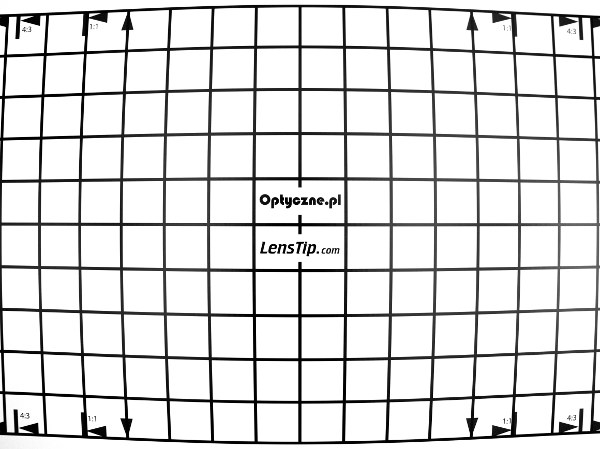
After in-camera software correction (only on Panasonic and Olympus bodies, not on Blackmagic):
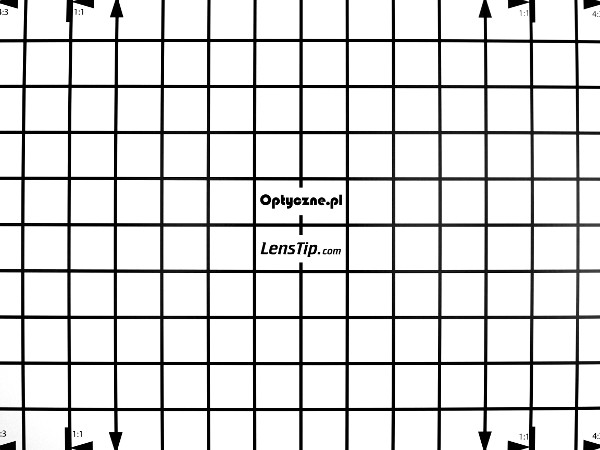
- midloch, IronFilm and billdoubleu
-
 2
2
-
 1
1
-
14 hours ago, cpc said:
As promised, the Sigma fp centered release of slimRAW is now out, so make sure to update.
Does it also work under Linux with Wine?
-
3 hours ago, paulinventome said:
So the check would be are those BRAW files actually just raw data from the camera or do they have any camera processing in them?
BRAW is quite processed (debayered in-camera, with noise filtering and sharpening applied), so it's debatable to which degree it can still be called a raw format. This is how BM officially describes it:
"The new advanced de-mosaic algorithm is a central component of Blackmagic RAW. Part of the RAW processing is moved out of software and into the camera, where it can be accelerated. Noise management, sensor profiling and new edge reconstruction algorithms are used to produce high quality cinematic images with incredible depth, crisp details and beautiful image separation."
https://www.blackmagicdesign.com/products/blackmagicrawBut it's the only raw-style video format that the BM Pocket 4K can record with current firmware, respectively in the currently-sold hardware generation of the camera. It can record DNG only as stills.
-
25 minutes ago, Lars Steenhoff said:
Interesting results, by the way I think you mean ISO 25600 and ISO 12800 instead of 256,000 and 128,000 right?
Yes, sorry, too late in the evening. (And I can't edit my original posting anymore.)
-
1 hour ago, eleison said:
Ok, I think I get it. Basically, you would like to compare sensors only at native/base ISO making the aperture and shutter speed subservient to the native/base ISO. I think a more educational test would be to see how the pocket 4k w/speedbooster compares with the FP - shot for shot, (same Fov, dof and exposure); I feel the pocket 4k wouldn't be so bad at low light since the speedbooster/lens combo will be one stop faster and you can keep the ISO lower and thus end up with less image noise.
Okay, made another test with the setup you proposed:
- Pocket 4K with 0.64x Metabones Speed Booster & Tokina 28-70mm/2.8 at 50mm and f2.8 [=actually at 32mm + f1.8], with camera exposed at ISO 128,000
- versus the Sigma fp with the conventionally adapted, non-speedboosted Tokina 28-70mm/2.8 at 70mm and f2.8 and ISO 256,000
Images:
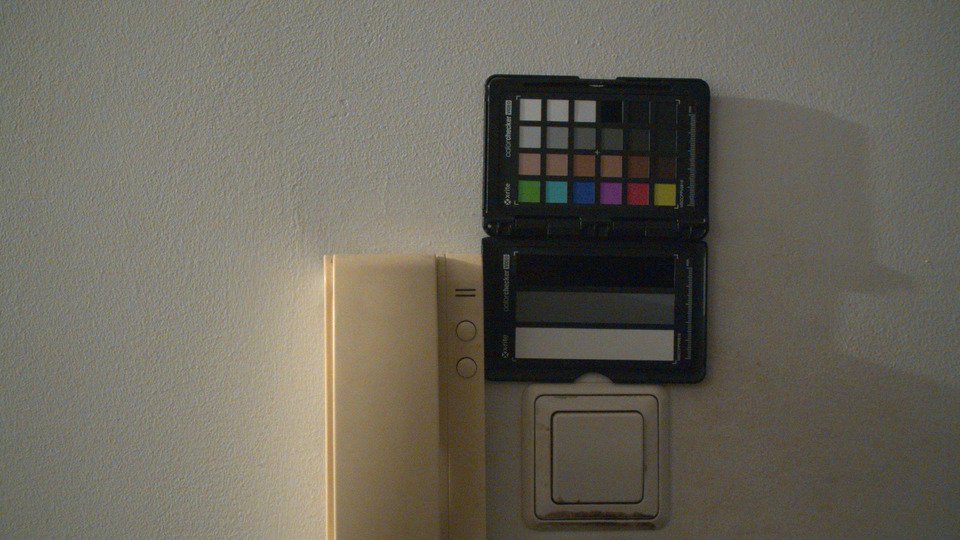
Pocket 4K BRAW (= with some in-camera noise reduction), ISO 128,000 + 0.64x Speed Booster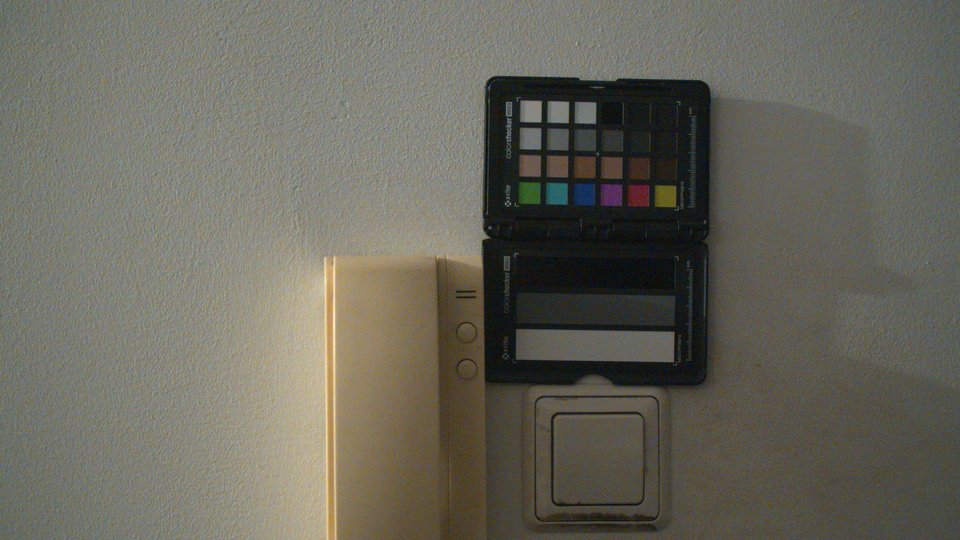
Pocket 4K DNG, ISO 128,000 + 0.64x Speed Booster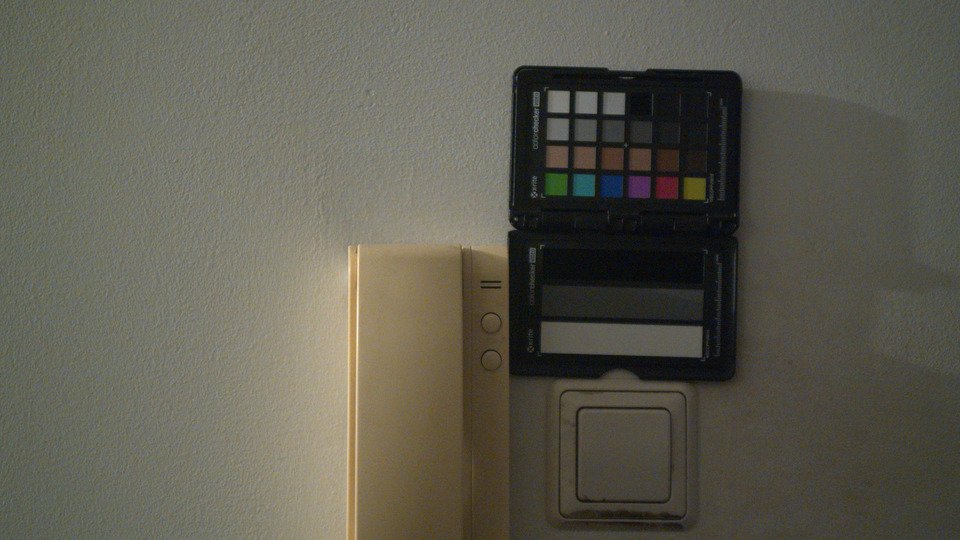
Sigma fp CinemaDNG, ISO 256,0001:1 crops:
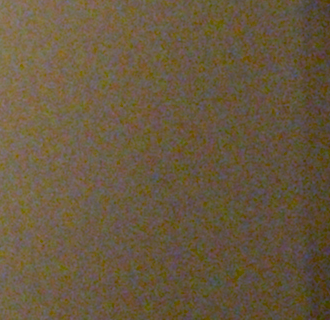
Pocket 4K BRAW (= with some in-camera noise reduction), ISO 128,000 + 0.64x Speed Booster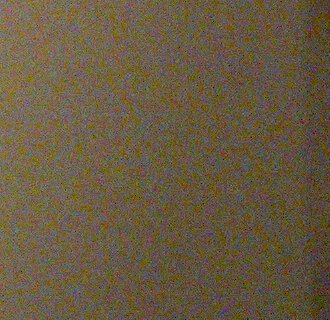
Pocket 4K DNG, ISO 128,000 + 0.64x Speed Booster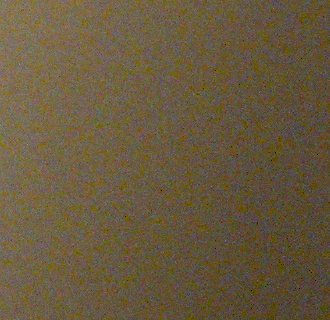
Sigma CinemaDNG, ISO 256,000The result is pretty much as to be expected, with the speedboosted Pocket 4K vs. the Sigma fp performing more like an APS-C camera vs. a full frame camera in low light with high ISO. As soon you expose on native ISO (without pushing gain), you however will back to MFT vs. full frame sensor performance in regards to noise levels.
- Lars Steenhoff and MikhailA
-
 2
2
-
14 minutes ago, eleison said:
I guess what I'm trying to say is if a short film was shot with a pocket 4k not using a speedbooster, would it have more noise than if it was shot with a pocket 4k using a speed booster ASSUMING the exact same shots (scene, fov, dof, etc.. basically the same movie shot for shot)? I was always under the impression that the speed booster would give the film less noise.
No, not in situations where the camera is correctly exposed at native/base ISO. (And not at all in situations where you use NDs anyway to keep light from the sensor - with a Speed Booster, you actually need stronger NDs.)
The only point where a Speedbooster helps against noise is in low light situations where you need to increase ISO/gain . Since the Speedbooster makes your lens one stop faster, you may be able to keep your ISO lower and thus end up with less image noise.
All a Speedbooster does is make your lens faster - i.e. turn an f2.8 lens into an f2.0 lens (or f1.8 if it's a 0.64x Speedbooster) - and wider, on a smaller sensor than it has been designed for. Nothing more, nothing less...
-
12 minutes ago, eleison said:
Technically true. Sensor noise is sensor noise. However, are you trying to tell me that the noise of an image w/ a speed booster which allows more light in, is going to be the same for a given field of view? For instance, if a pocket 4k is using a 35mm lens w/o a speedbooster as compared with using a 70mm with a speed booster to approximately give the save field of view and given that they are exposed correctly under the same lighting conditions and DOF; the graininess/noise of the images will be the same? I was under the impression, these two images would have different noise levels. The speed booster would have less noise since there are more photons hitting the sensor.
In the example I posted last, the sensor is already maximally exposed, and if more photons hit the sensor, you would have a clipped image.
In that scenario, with a Speed Booster all you would gain is an extended field of view by stopping down the lens from f5.6 to f8. (Which however would introduce diffraction and is therefore not necessarily desirable.)
Graininess/noise of the image doesn't change with the lens' focal length or aperture unless you underexpose/boost ISO.
Btw., use of a Speedbooster doesn't require to adjust your focal length from 35mm to 70mm, but from 35mm to 49mm if you use a 0.71x Speedbooster or to 54mm with a 0.64x Speedbooster. -
5 minutes ago, Lars Steenhoff said:
How did you measure when the fp clipped? I think you could have exposed a stop more without breaking the highlights. Maybe not but just a feeling
I made a series of exposures, by gradually opening the shutter and thus exposing beyond the clipping point indicated by the zebras.
So far, the zebras both on the Pocket 4K and the Sigma fp have been 100% reliable indicators of clipping. (At least with white light where RGB clipping is uniform.) Whenever zebras became visible on the camera display, I ended up having clipped waveforms in Resolve.
(Of course, "highlight reconstruction" needs to be switched off in Resolve in order to see sensor clipping.)
-
15 minutes ago, eleison said:
I wonder how close the low light abilities are to each other if the pocket 4k has a speed booster. I think a lot of pocket 4k users are also using speedboosters and this would probably be a fairer comparison. The field of view would also be closer. Also, a pocket 4k w/ speedbooster is about the same price as the sigma fp.
The Speed Booster doesn't change dynamic range, nor does it change sensor noise at base ISO. So the above results would be the same - I would have only had to stop down the speed-boosted lens on the Pocket from f5.6 to f8 to avoid clipping.
In extreme low light settings, there wouldn't be much difference either because then the Pocket operates at its second native ISO with higher ground noise. You wouldn't gain much from lowering the ISO from 256,000 to 128,000 in that case. (In fact, you can test that yourself in Resolve with the supplied raw files.)
-
Here's another dynamic range shootout between the Sigma fp and the Pocket 4K, this time with the LED fresnel at full power to create maximum contrast and a hard shadow, and an X-Rite Color Chart Pocket Video in the shadow to have a better indicator of shadow dynamic range.
Cameras were set to 11.2 degrees shutter, ISO 100 (Sigma fp) respectively ISO 400 (Pocket 4K). With this harsh light, I needed to set the Pocket 4K to f5.6 for ETTR exposure (i.e. exposure just below the clipping point) while the Sigma fp clipped at f5.6 and needed to be stopped down to f8 for correct ETTR exposure. (This is an indicator for camera's native ISO being 800 in log. In other words, the Sigma fp is about one stop more light sensitive at ISO 100 than the Pocket 4K at ISO 400.)
This resulted in the following pictures, with DCI-P3 color space + Rec709 gamma interpretation in Resolve and Color Temp/Tint and exposure sliders adjusted to have the two camera images visually match:
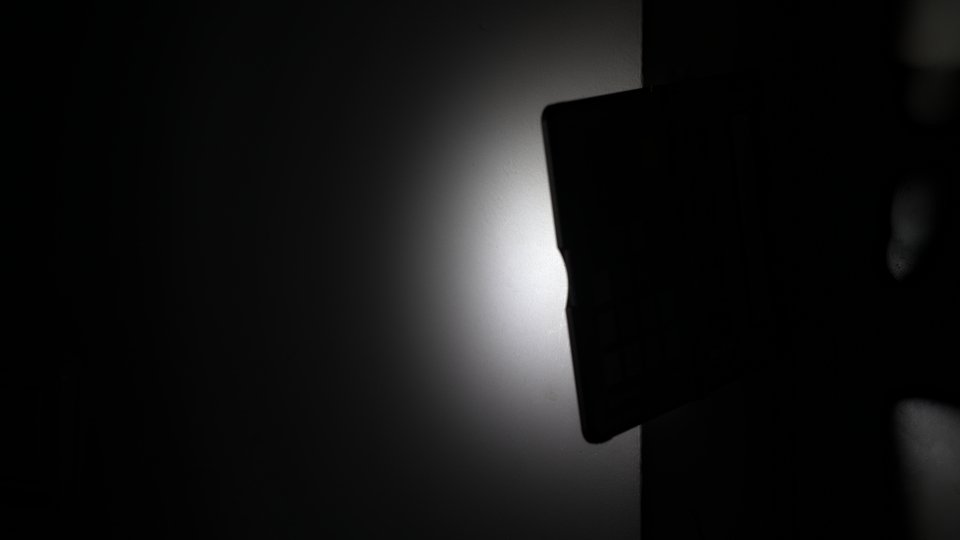
Sigma fp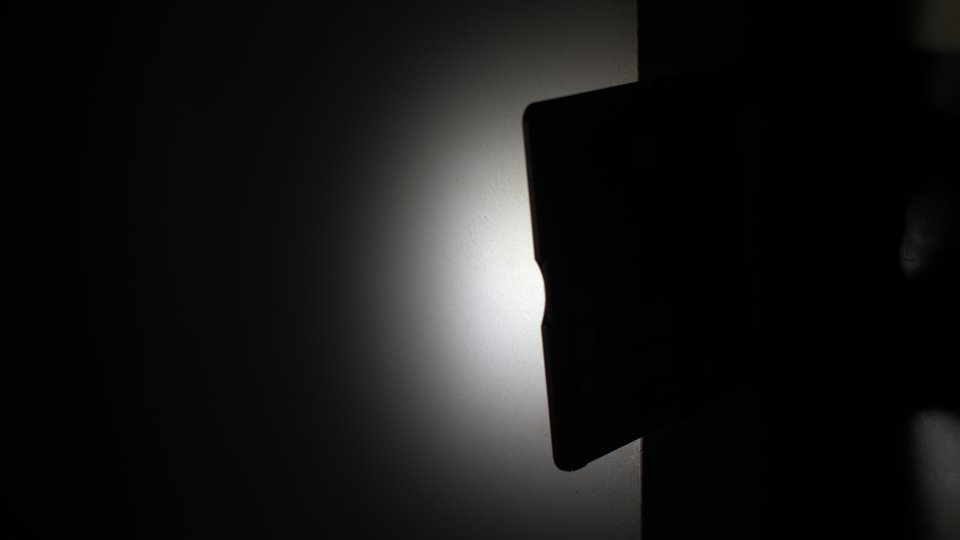
Pocket 4KAnd extreme lift of the shadows with the following curve...
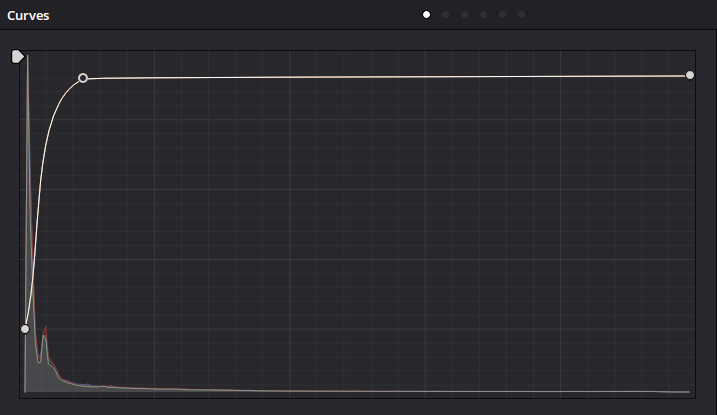
...reveals the following:
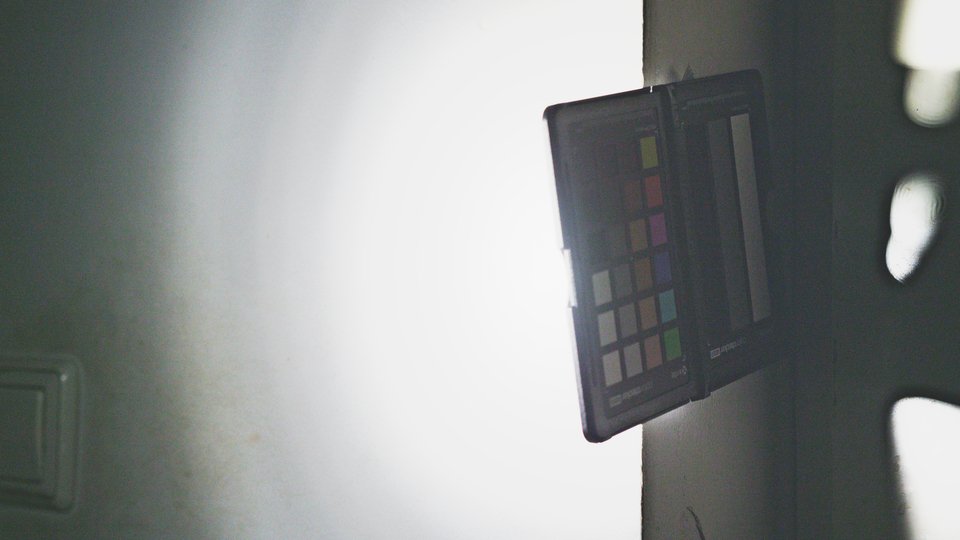
Sigma fp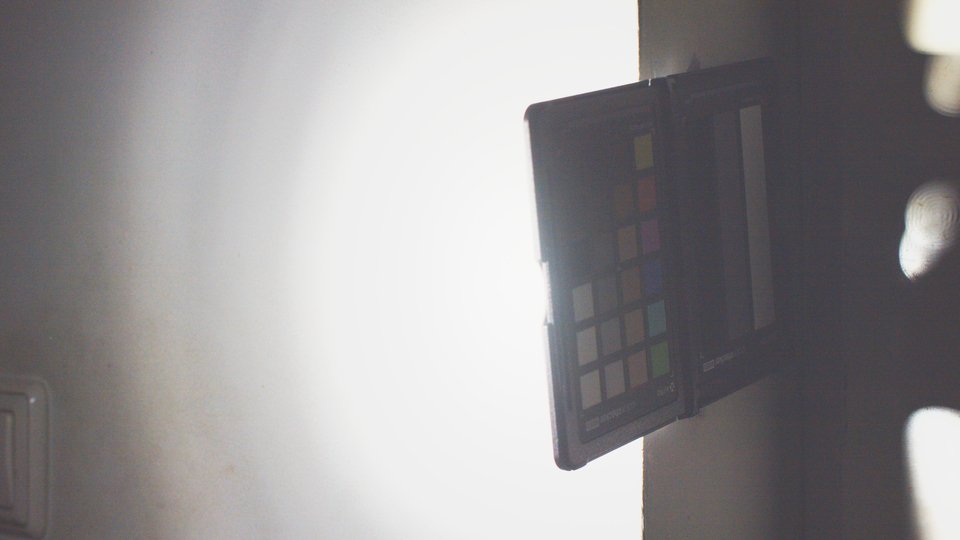
Pocket 4K1:1 crops of the upper left color patches:
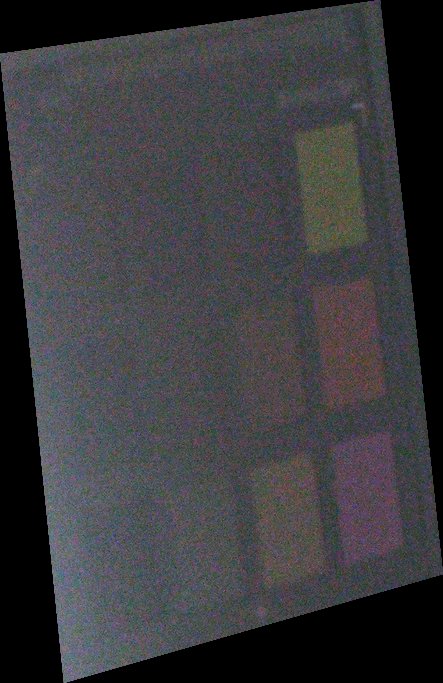
Sigma fp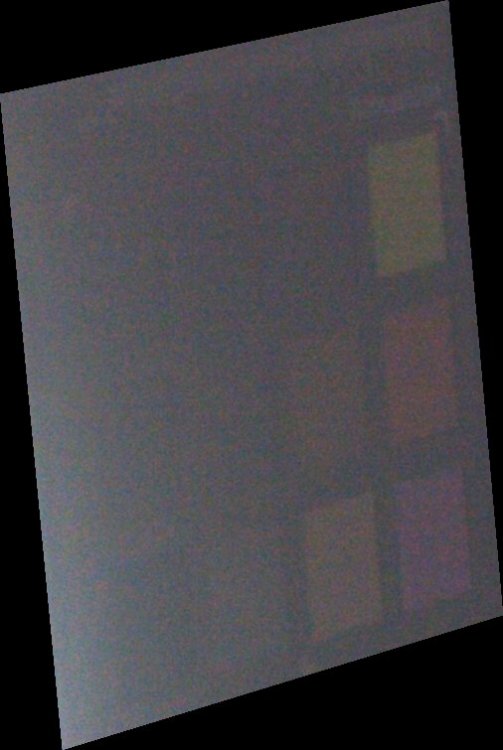
Pocket 4K
I'd say that on the Sigma fp, three of the dark grey color patches can still be differentiated whereas on the Pocket 4K, they are undifferentiated. Since I don't have a precise-enough meter to measure the difference of the reflected light, I'd say in a completely unscientific way that the fp has probably one stop more dynamic range in the shadows when the picture is exposed ETTR.It also seems as if in the extreme shadows, the temporal noise filter of the Pocket 4K's BRAW really kicks in, since single pixels on the fp's CinemaDNG are clearly differentiated whereas on the Pocket 4K's image, they are blurred. (This is why in this scenario/grade, the Pocket 4K's image is [surprisingly] less noisy than the fp's.) - EDIT: indeed, if you compare it to the DNG still from the Pocket 4K where BRAW's processing isn't applied:
- This time, I created a complete zip archive (91 MB) with one frame of the Sigma fp's CinemaDNG recording, the Pocket 4K's original BRAW file (consisting of just 3 frames) + a DNG shot with the Pocket 4K, plus the full-resolution UHD 16bit tiff of all above images:
- Lars Steenhoff and MikhailA
-
 1
1
-
 1
1
-
1 hour ago, Lars Steenhoff said:
Also the black magic seems to be exposed different in Lightroom, not sure why this is.
Sorry, I had included the wrong DNG in the archive. This has been fixed now; if you re-download it, you should obtain the frame with the correct exposure.
(Has now also been fixed in the originally uploaded archive.) -
6 hours ago, Lars Steenhoff said:
would you mind sharing a raw file of both cameras?
Not sure yet what to conclude on dynamic range
Sure, here are 4 single DNG frames (35 MB zip archive) shot with both cameras in the two different light setups. The two DNGs of the Sigma fp were taken from the CinemaDNG folder, the two DNGs of the Blackmagic RAW were shot with the still function of the camera directly after shooting BRAW, with the same camera settings. (The BRAW files are too big to share here.)
To better judge tonality and dynamic range, I applied another 'extreme grade' solarisation curve which, this time, doesn't clip parts of the image and also compresses the dynamic range a bit so that highlight and shadow rendition become better visible:
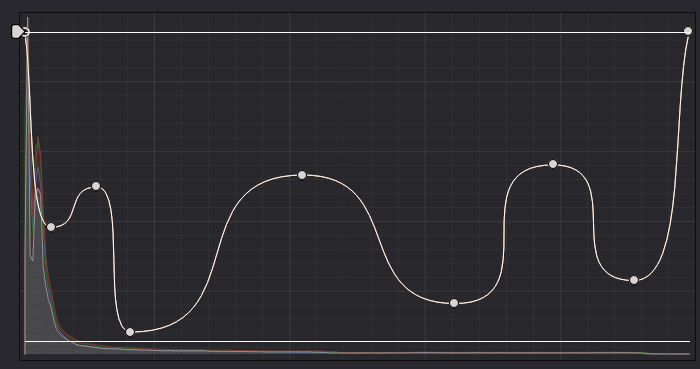
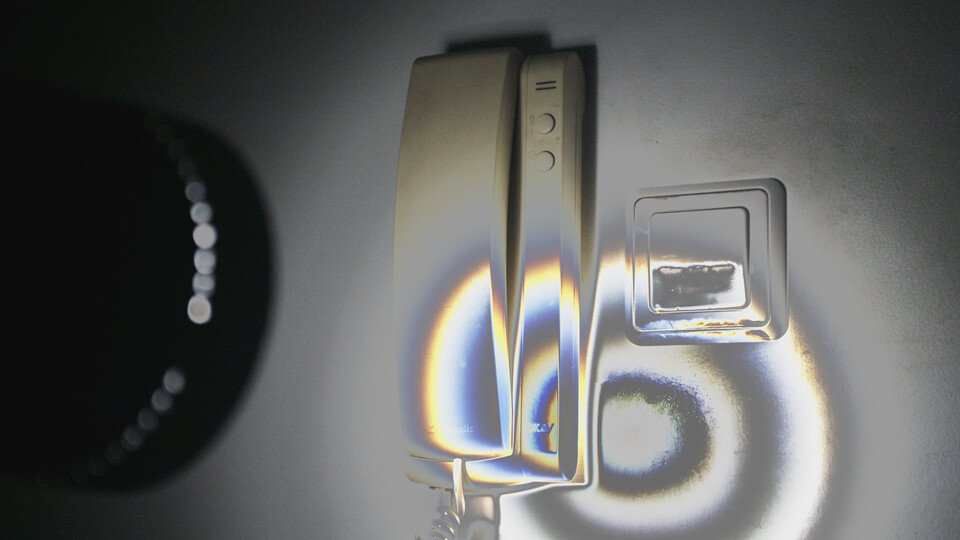
Sigma fp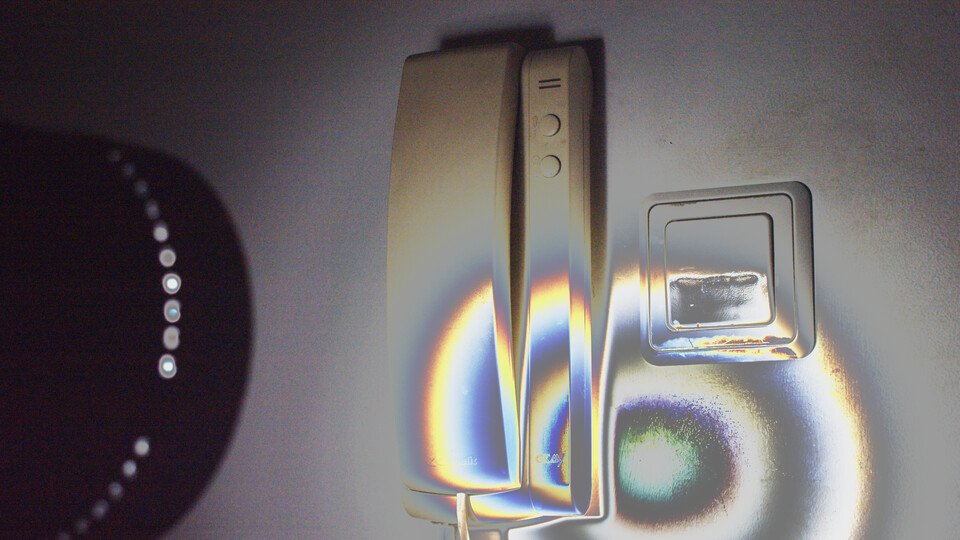
Pocket 4KFull-resolution, 16bit TIFFs can be downloaded here (48 MB zip archive).
Highlight rendition is pretty identical with both cameras since they were both exposed to the right. So any difference in dynamic range should be visible in the shadows. A good indicator are the color gradations and red stripe on the lamp in the foreground that (still) can be seen in the low-light, low-contrast image:
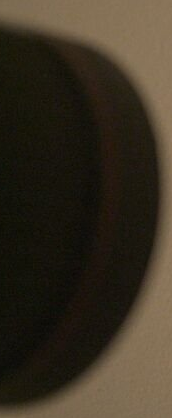
In the high contrast light, neither the Sigma fp nor the Pocket 4K render these details anymore, but turn the lamp into one dark monchrome blob (with more image noise in the case of the Pocket 4K). So I think it's fair to say that both cameras have about the same dynamic range at optimal ISO settings, only that the Sigma fp renders smoother color gradations because of its lower sensor noise, as visible in the extreme grade above.
-
Since I found the YouTube comparison between the Sigma fp and the Blackmagic Pocket Cinema Camera 4K so worthless, I did a comparison test of my own.
I wanted to compare the cameras in two respects:
(1) dynamic range when shooting a high-contrast subject under optimal light/with optimal exposure + robustness in grading the resulting image;
(2) low light/extreme high ISO image.My setup was as follows:
- Completely dark room;
- Both cameras with the same lens, Tokina 28-70mm/2.8 (Nikon mount adapted to L-mount and MFT respectively) at the same aperture setting (f4) on both cameras, but at 35mm focal length on the Pocket 4K and at 70mm on the Sigma fp to compensate for the different sensor sizes;
- Record settings: UHD 23.98p on both cameras, full frame CinemaDNG 12bit on the Sigma fp and BRAW Q0 on the Pocket 4K (= best quality codec settings on both cameras);
-
For the high-contrast test: daylight-temperature LED fresnel with maximum focus/spotlight on a plastic appliance reflecting some of the light to create high contrast; both cameras at minimum/native ISOs exposed ETTR/to the right. Both cameras set to 11.25 degrees shutter angle (in lieu of an ND filter, since motion rendering is irrelevant in this test).
(Note: Lowest, respectively native, ISOs on the two cameras are ISO 100 on the Sigma fp and ISO 400 on the Pocket 4K. Never mind that nominal difference, both cameras have almost identical clipping behavior at these settings, i.e. ISO 100 on the Sigma fp behaves like ISO 400 on the Pocket 4K. On both cameras, the zebras turned out to be reliable indicators for sensor clipping: To go absolutely sure that I would optimally expose the sensor, I also shot the scene at larger shutter angles - 22.5, 45, 90 and 172.5 degrees -, with zebras popping up as early as at 22.5 on both cameras. When looking at the material in Resolve, this was indeed where clipping had occurred and waveforms remained clipped in the RGB parade even when lowering exposure in Resolve's Raw control tab.) - For the low-light test: same 'scene' as above, but with the LED fresnel turned off and only a practical light in the background turned on. Both cameras set to maximum ISO (256.000), at f4 and 172.5 degrees shutter angle.
Treatment in Resolve:
- Basic image adjustments only in the Raw tab, interpretation in P3 color space with Rec. 709 gamma: adjustment of white balance/tint and exposure to make the Sigma fp and Pocket 4K footage match. (The raw material of the Blackmagic Pocket 4K was much warmer than that of the Sigma fp with the same Kelvin settings...) No highlight recovery. (Wasn't necessary anyway since there was no clipping in the images.)
- No noise filtering or sharpening, although the Pocket 4K's BRAW codec already has some baked-in temporal noise filtering.
-
For the extreme grade, only a solarization-like custom curve was applied that pushed the shadows to the maximum and was meant to provoke banding in the material by pushing contrasts:
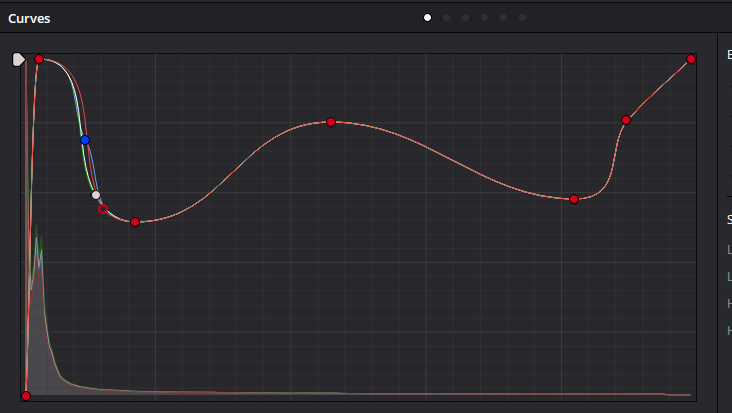
I exported 16bit TIFF screengrabs which can be downloaded here (6 TIFF files in a zip archive, 133 MB).
Here's how the well-exposed high-contrast scene looks like (25% downscaled images):
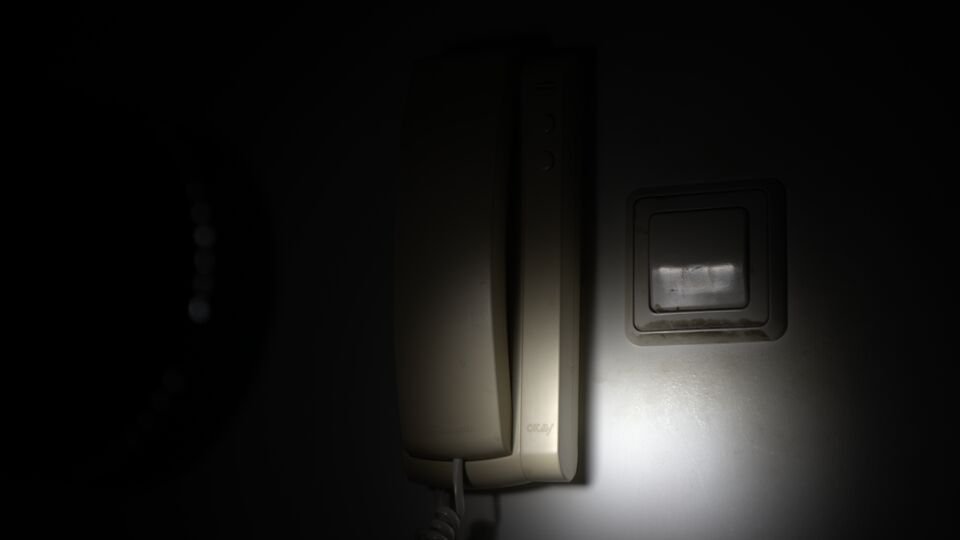
Sigma fp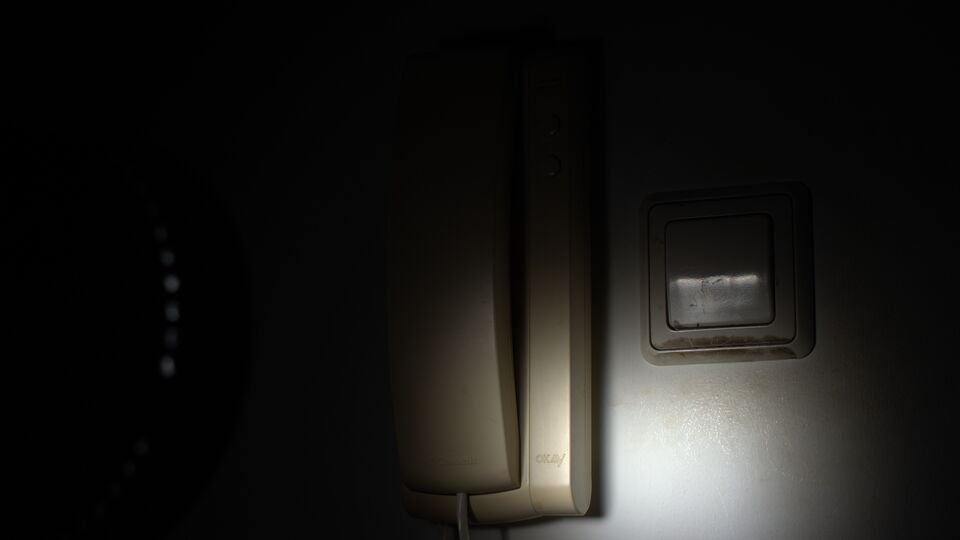
Pocket 4K
- Note that the difference in sharpness may be my user error, and is also influenced by the different depth-of-field between 35mm/f4 on MFT and 70mm/f4 on full frame. The manual focus aides on the Pocket 4K are much better with latest firmware, so nailing focus without an external monitor was easier.
1:1 crops of the above two images: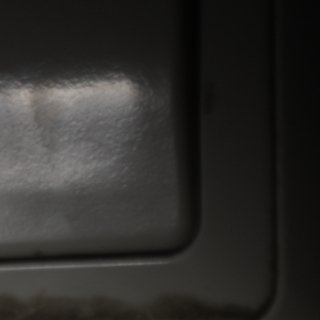
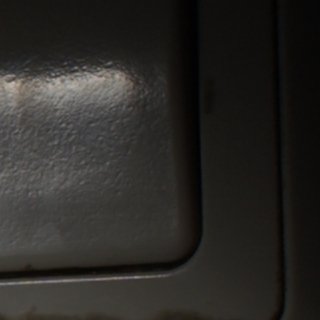
Sigma fp (left) - Pocket 4K (right).Extreme grade, with the same curve (as posted above) applied to the two above images:
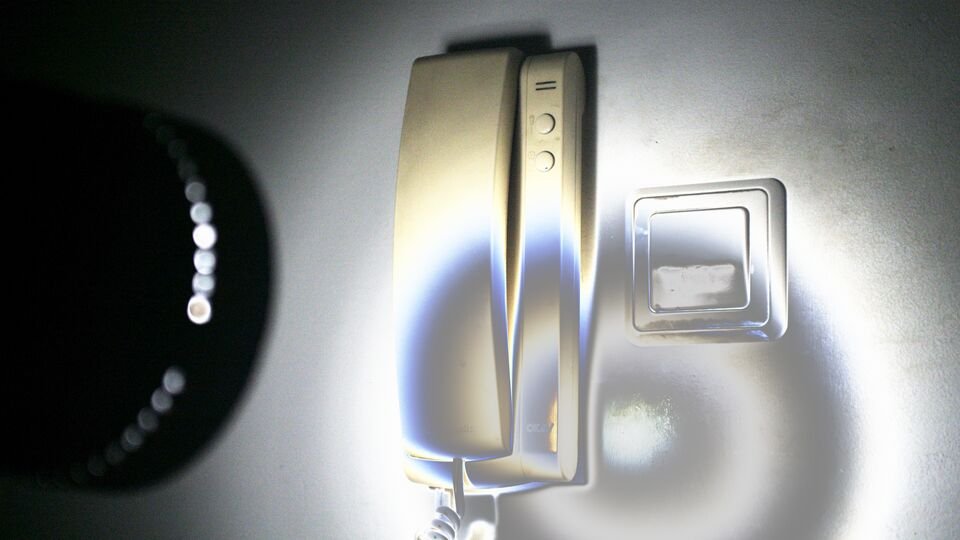
Sigma fp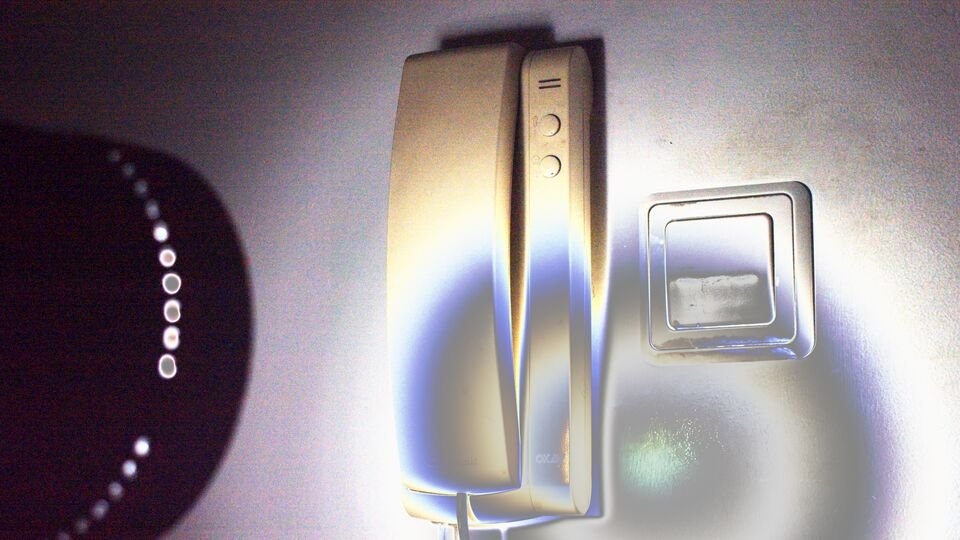
Pocket 4K1:1 crops of the above:
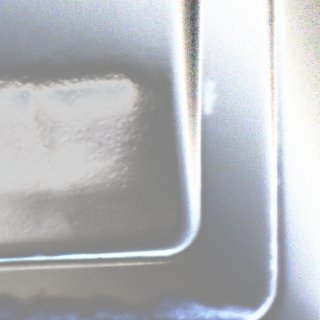
Sigma fp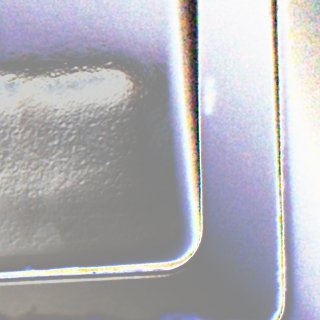
Pocket 4KLow light, with both cameras at maximum (256,000) ISO, 172.5 degrees shutter and f4:
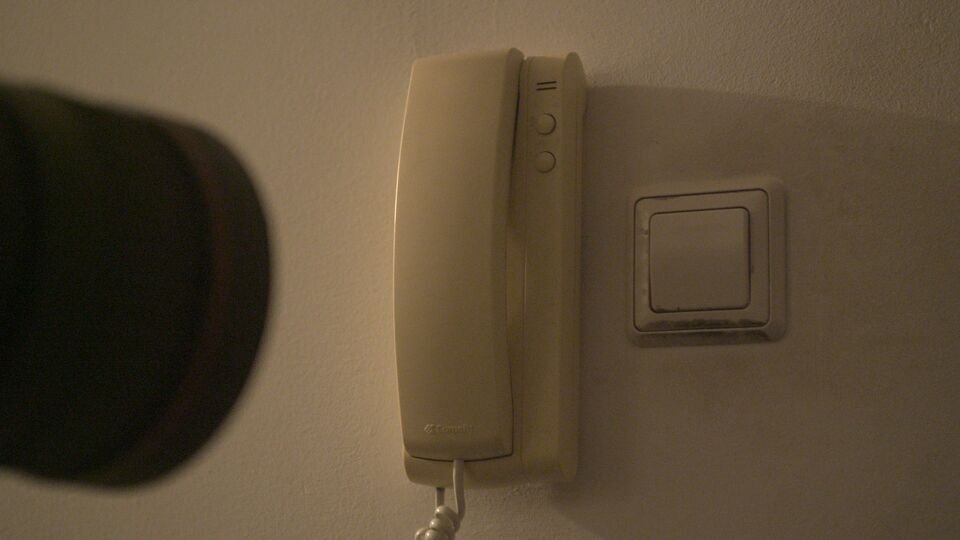
Sigma fp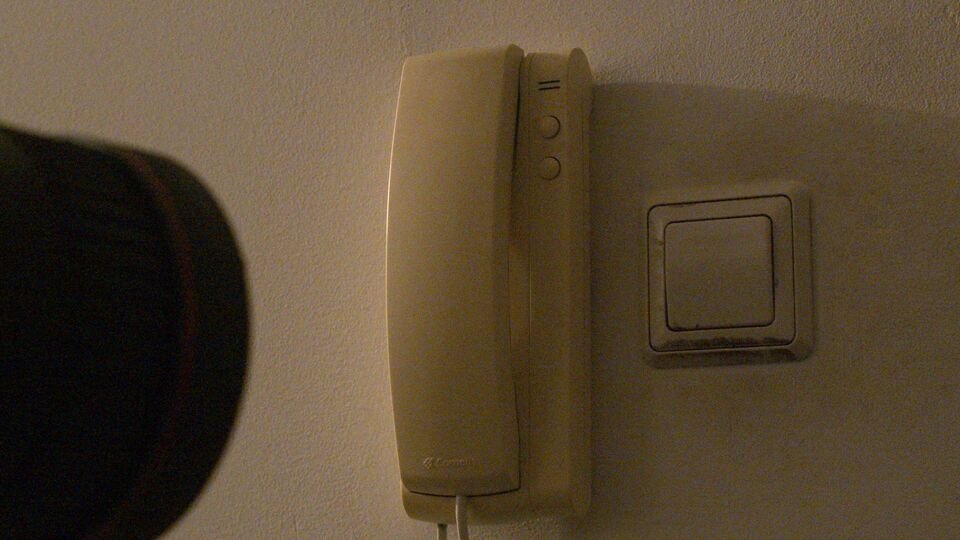
Pocket 4K1:1 crops of the above:
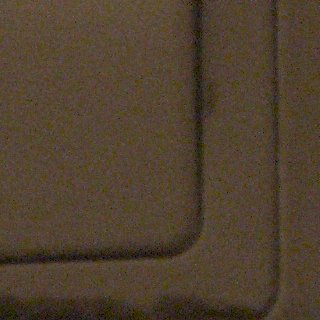
Sigma fp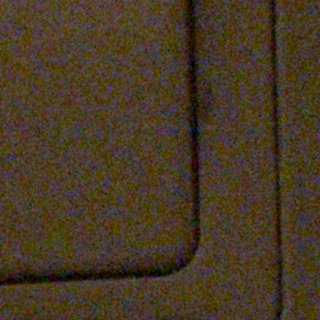
Pocket 4KSo, to summarize, I think it's fair to say that the full-frame 12bit CinemaDNG material of the Sigma fp simply shows the benefit of a larger sensor and its lower image noise (even at base ISO if you compare the full-size TIFFs). It's thus only logical that it holds up better in extreme grades and in low light.
My likely user error in nailing the focus of Sigma fp also shows the strengths of the Pocket 4K, namely better camera assist functions and overally a better user interface/more practical user experience for video shooting. - But it's also nice to see that the Sigma fp has some genuine advantages over the Pocket 4K, especially for my own type of videomaking which revolves around event videos (concerts at indie/DIY venues) shot in extreme low light conditions.
- buggz, MikhailA, Thomas Hill and 3 others
-
 6
6
-
What a bunch of incompetent BS in the above video:
- The L mount more adaptable than MFT? Are you kidding me?
- Low light capability: he doesn't even know how to expose the cameras and blows out the highlights, and rather compares ISO calibration of the two cameras. (What you actually would need to do is shoot bracketed exposures with both cameras, then find material that matches in exposure when interpreted as Rec709 and compare noise levels).
- He doesn't know the difference between highlight recovery as a software function and highlight rolloff of a camera and mixes up the two. Besides, identical ISOs between two different cameras are never comparable, see above.
- "The color science of the Sigma fp looks, I don't know..., too sharp to me" - well, at that point one should probably stop watching the video.
- "[With the Pocket 4K] you can access that flat, raw, no colors whatsoever and start from scratch" - again, he doesn't know what he is talking about.
- "The Sigma fp doesn't have high frame rates in UltraHD, DCI 4K, whatever you wanna call it". (He doesn't know the difference between UHD and DCI 4K.)
- "When it comes to extra features I have to give it to the Sigma fp, because it's a pretty legit stills camera and I shot my Christmas cards with it". That might be most relevant to him, but one shouldn't forget the video-centric extra features of the Pocket 4K such as timecode synchronization, ProRes, XLR input with phantom power, wireless/Bluetooth remote control, 4K raw recording to SD cards, CFast slot, user-uploadable display and recording LUTs, 4K DCI, 2.7K windowing, anamorphic desqueeze, false color, simultaneous zebras and focus peaking, customizable function buttons + dedicated buttons for ISO, shutter and white balance , high framerate/slow motion button + external power connector...
-
1 hour ago, eleison said:
The term "cinema camera" is so weird. Remember when people shot film? Nobody did any coloring EXCEPT for big name directors who sent their film to "coloring" companies to basically make sure every shot match with every other shot for a certain scene. That was about it. Nothing more. Now we have dedicated coloring software that pushing images from "left to right" and if the footage isn't 10bit or better it's not "cinema" quality..
Well, negative film stocks like Kodak Vision and Fuji Eterna actually had/have amazing dynamic range and color depth, far superior to 8bit 4:2:0 video. (The same is even true for the color depth of 3-strip 1930s Technicolor...)
And digital cinema today (DCP) is 12bit JPEG-2000 in CIE 1931 RGB/DCI P3 color space, which is vastly better than prosumer-grade 8bit 4:2:0 video in Rec709 color space shot by the A7iii.... And thanks to cameras like the Blackmagic Pocket and the Panasonic S1H (or even a second-hand Blackmagic BMCC 2.5K for a couple of hundred bucks) and Davinci Resolve, digital cinema acquisition has become affordable for the masses and doesn't have to be more expensive than an A7iii body.The F900 is a deliberately crappy example. Back then in the 1990s, George Lucas prematurely jumped to digital image acquisition. The image produced by the F900 was below cinema film standards; I remember how the bad image quality of Star Wars Episode 2 and 3 was even discussed by fans back in the 1990s. (Aside from the fact that most of the images in those two films were CGI, and the cameras were only used to film the actors in front of green screens.)
-
The A7iii is a good allround video camera and really excellent stills camera (I do own it), but no cinema camera because of its weak codecs and 8bit limitation, no matter how you rig it up.
- IronFilm, Geoff CB, Mark Romero 2 and 5 others
-
 8
8
-
Nikon, Olympus and Ricoh/Pentax will go out of business (or at least stop making cameras), Panasonic will quit its increasingly unprofitable stills camera business and only keep producing pro video cameras. Canon and Sony will keep what remains of the mainstream consumer/prosumer camera market while reducing the number of models to 3-4 bodies, and innovate at the same slow pace as in the last couple of years. Fuji and Leica will keep their profitable boutique niches.
The Japanese camera and consumer electronics industry will, in the 2020s, go the way of the German camera and consumer electronics industry in the 1970s.
Blackmagic will, at some point in the 2020s, stop making the Pocket camera because its FPGA design - that requires bigger bodies and higher power consumption - will be no longer competitive with the ASIC designs of larger camera manufacturers. (We're already seeing the beginnings of this with the Sigma fp vs. the Pocket 4K.)
All major hardware innovations & new types of camera gear will come from Chinese companies: DJI, Z-Cam, Kinefinity, Metabones, Xiaomi, Foxconn, Zhongyi Optics and others that aren't on the radar yet. We'll all get our gear from AliExpress (if we aren't already doing that).
The impact of AI/Deep Learning technology on digital imaging will be massive, as we are already seeing in smartphone photography, drones and gimbal cameras like the Osmo Pocket. This will result in radically improved debayering, denoising, upscaling, sharpening, color-upsampling & other image quality improvement algorithms that will push major image quality factors from hardware (optics & sensors) to software (computational imaging). In the 2020s, we will see this impacting consumer/prosumer video - not just smartphone stills - for the first time. Chinese companies will be quicker (as they already are, take DJI and Huawei) marrying AI imaging and camera hardware.
And yeah, without wanting to spoil anyone's party, I don't expect the world to manage climate change, so we'll miss the 2 degrees mark. In the 2020s, this will lead to the realization that many coastal cities and whole countries have no future, which in turn will result in banks and other investors (hedge funds, pension funds etc.) massively writing off real estate value in their books, which will likely cause another global financial system crash and disrupt global industrial supply and transportation chains. So there's a good chance that business won't continue as usual, and that the days of affordable new gear will be over for those who don't belong to the 1%.
- Predictions = speculations. Will eat my posting in December 2029 if my expectations were wrong.

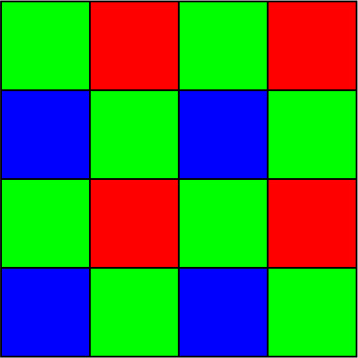
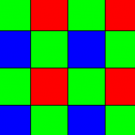
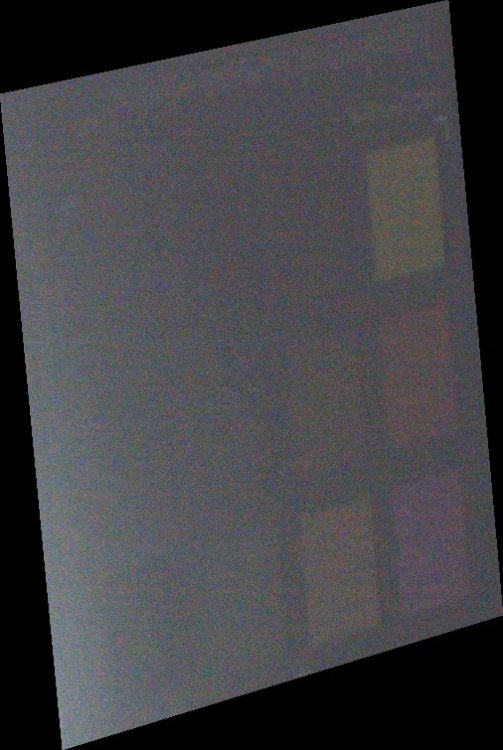
What cameras are you currently shooting with?
In: Cameras
Posted
The Sigma fp should be on this list, too - or is it really "something weird"?